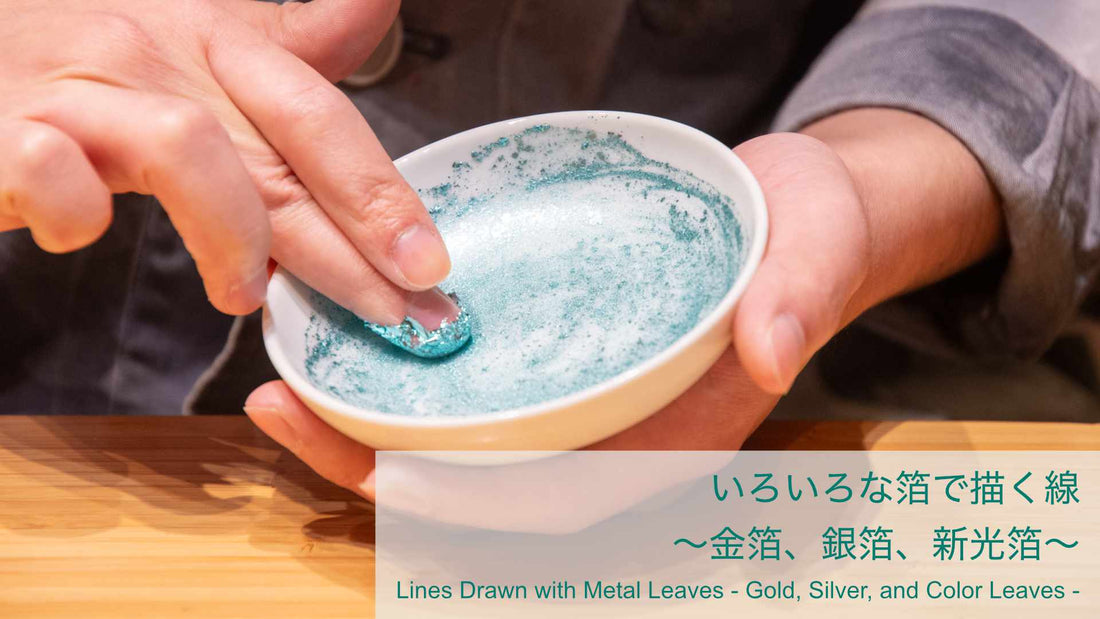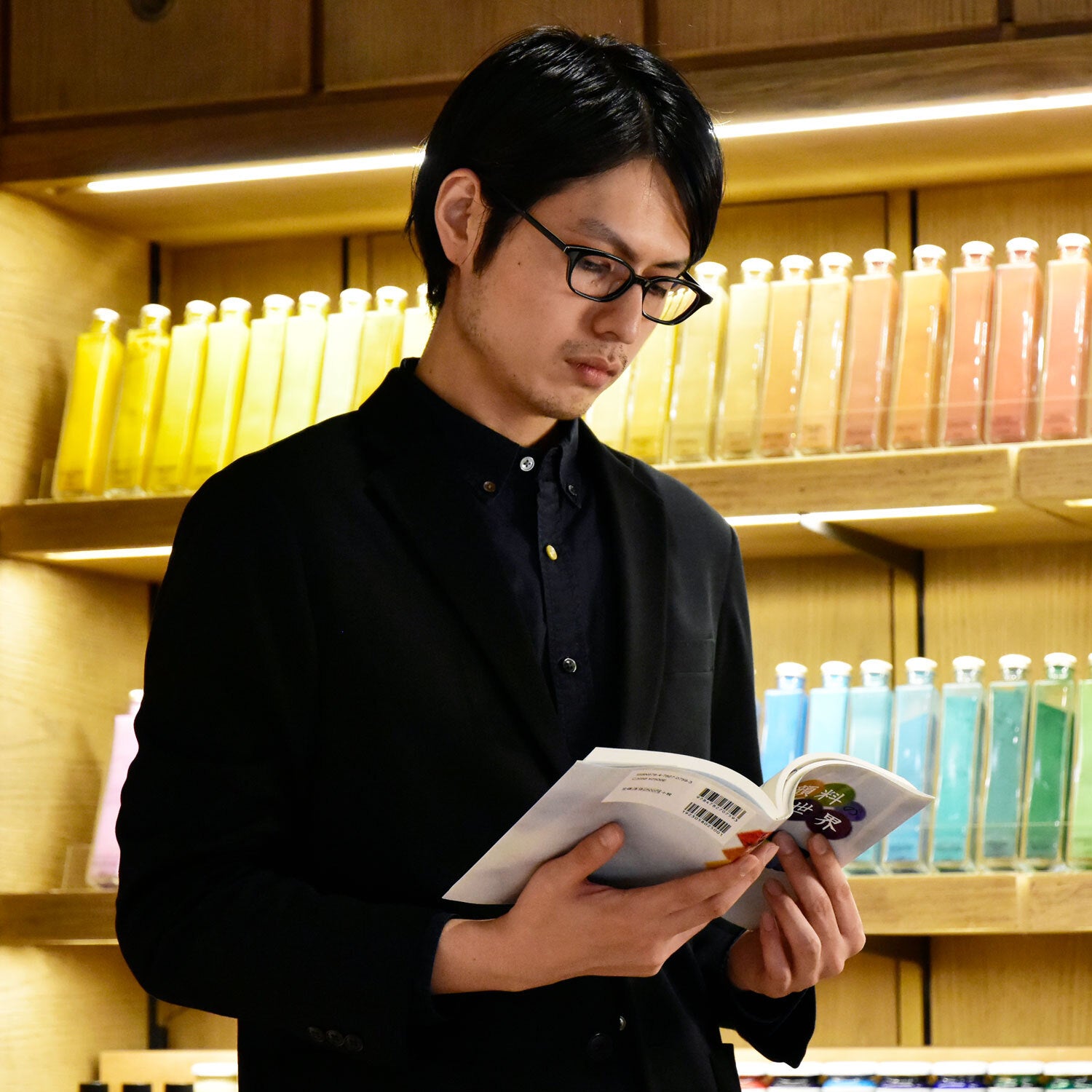**********
When it comes to foil, it is easy to think of it as a painting material for "pasting it on the basal material" using mediums such as foil stamping and sand, but in fact there are other uses.
For example, the painting materials called gold extinguishing and silver extinguishing are powdered metal pigments. These are finely crushed and kneaded with melted glue, resulting in good growth paint, gold mud and silver mud.
Pigment Tokyo "Metal foil」
In addition, even if you do not use money, you can draw a drawing that makes use of the color of the foil by kneading the fine foil and the glue, which can be made when the foil is cut off into a square.
Of course, it is also possible to make gold and silver mud from the sheet -shaped foil.
By using this method, it is possible to use it as a pigment and use it as a pigment.
Since it can be made from a small amount, it may be better to use a sheet -shaped foil without using money even if it is a small application.
In this work, it is important to knead the metal with a picture plate, so we recommend using a re -soluble glue so that it can be heated after drying.
The medium for acrylic paint is not suitable for this work because it is filmed and hardened when dried.
In addition, the Arabia rubber used in transparent watercolor is also liquid by adding water, but it is not recommended because the adhesion is weaker than that of glue.
Let's take a look at the materials you actually need.
First of all, there is no powdered sale "New light foilI will make paint.
This foil is colored coated with synthetic resin, dye and pigment in silver foil. By coating on both sides, it is processed to prevent silver -specific discoloration as much as possible.
However, please note that due to the nature, if you expose it under light for a long time, you may see some fading.

[List of art materials]
・Metal foil(The one in the photo is a new light foil)
・Directate concentration 20 % for dominance.(Pork solution can also be substituted)
・ Electric stove
( * Because it is also used in baking foil, it is not recommended to substitute with other equipment.)
Of course, it is possible to substitute the glue that you are used to, but the amount of percent and water will vary depending on the type of glue, so please adjust it yourself.
The work process is as follows.
① Put the foil on the picture plate
Put the metal foil in the picture plate. Silver foil reacts with sulfur and turns black, and new light foil has a weak light resistance, so it is necessary to use the foil depending on the exhibition and use.
②, ③ Make a glue solution
Add water to another picture dish to the concentrated glue at about 20 %. As a guide, the concentration is about the same as when the rock paint is kneaded together.
Work on another picture dish instead of the same picture dish so that the glue can be mixed evenly.
④ knead while mixing
Put the glue solution made in the previous process in a picture plate with foil and knead it with the middle finger belly.

⑤ Addition of water
Add water if necessary. Please refer to the image and add the amount of the whole picture dish that does not become watery little by little.
⑥ Introduction
I will further knead it. The glue and metal foil are dispersed, and it is completed if it is familiar to it.
⑦ Work before drawing
When the glue is cooled, it becomes jelly -like, and when heated, it has a liquid.
The same is true when mixed with pigments, etc., and it is necessary to heat the glue as needed as needed. Such equipment may not be required during hot months, such as summer, but basically it is necessary to heat it with an electric heating machine and draw it firmly before drawing.
⑧ Baking
The paste -shaped foil, which has become slightly finer mixed with the glue, is roasted with an electromotive heat and dries it to fix it strongly.
Add the glue and water again and mix with the stomach of the middle finger.
Lightly blend in water to the face brush, put on paint and make a trial writing. At this time, if the water is too low, adjust it as appropriate.

⑨ Completion
Here is the actual drawing on Takewa paper (for watercolor).
Although it is a little difficult to convey in the photo, it has a different texture that is different from the effect pigment, and it can be used effectively for signs and caligraphy.
However, it is expensive compared to pigments that artificially reproduce gold and silver, so it is not suitable for applying a wide area.

Of course, gold leaf and silver foil can be painted in the same procedure.
Silver foil is more likely to stick to the foil than other foil and become lumpy, and it is difficult to knead, so it is necessary to mix it firmly.
In some cases, it is recommended to use a sandy cylinder (gold mud) to make the foil finely and mix with glue.

This photo shows the pure gold leaf five -colored color. With this foil, I was able to make smooth gold paint.
By repeating the process of ④ to ⑧ only for pure gold leaf, the shine becomes stronger.

Similarly, here is the drawing on Takewa paper (for watercolor).
The charm and sparkle of the substance are beautiful, not in the effect pigment that expresses gold.

Here is a state of comparing with new light foil, pure gold leaf, and main silver foil.
The luster of foil was very beautiful, so it had a texture that tilted it in your hand and wanted to enjoy a sense of polarizing.

In the same procedure, you can make paint not only with new light foil but also with black foil and copper foil.
It may be a good idea to try it with various foils or reuse the surplus foil with foil stamping.
You can use it in various ways, such as mixing gold and silver.
If you are interested, please try it.


